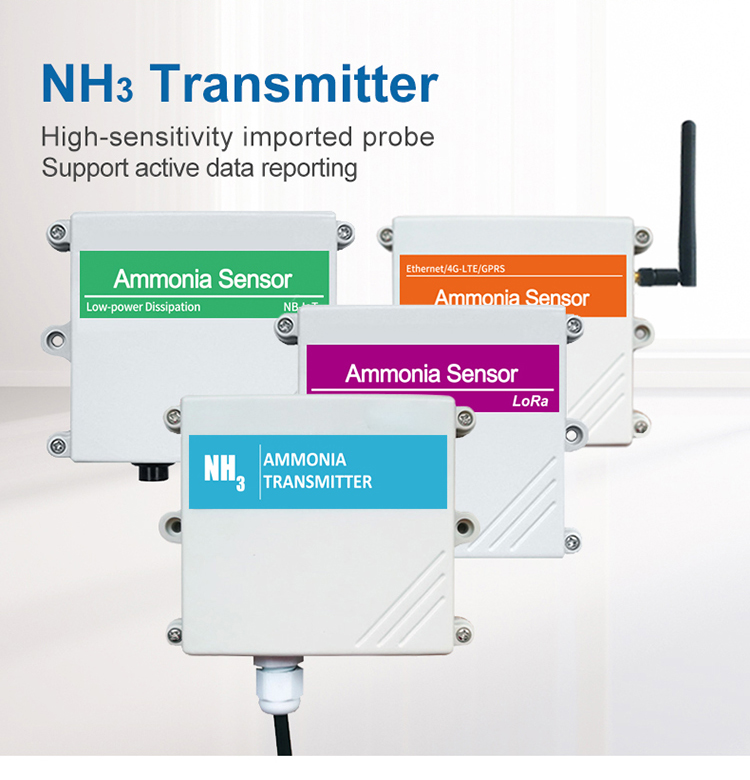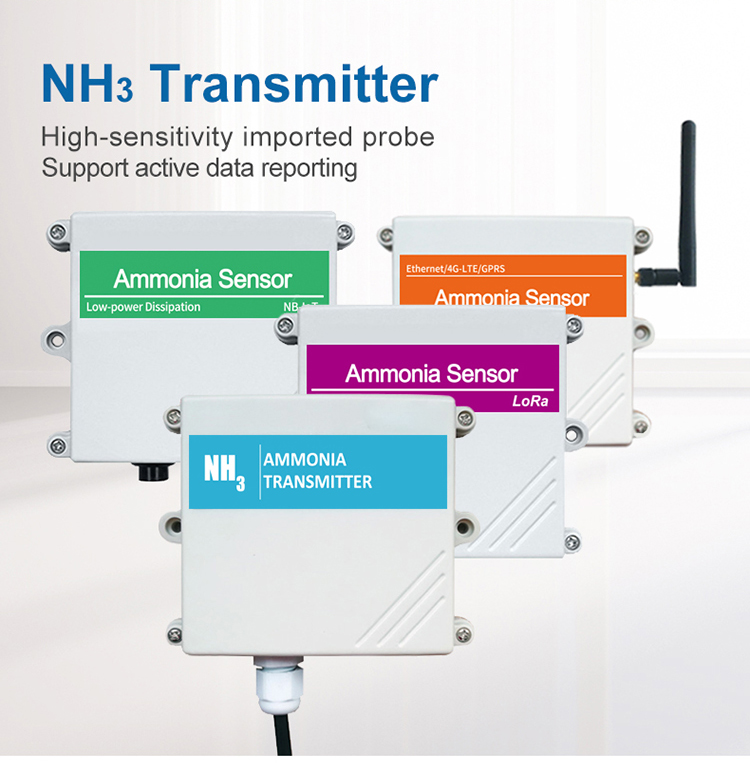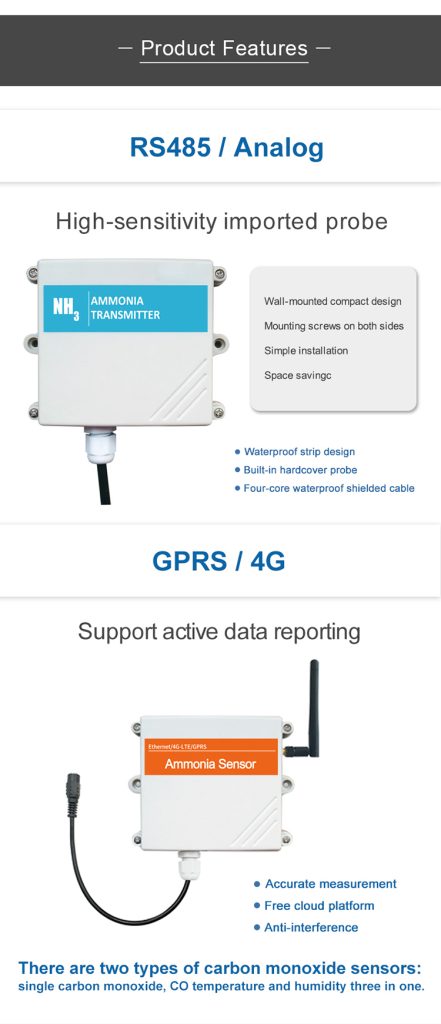Ammonia Sensor

We usually use LEL ammonia sensor in industrial plants, traffic tunnels, energy and electric power environments. Ammonia sensor is used for health and safety monitoring through the chemical industry, coal mine roadway, gas drainage and other environments. Exposure to high concentrations of ammonia can be harmful to human health, so it is important to accurately monitor ammonia levels in indoor environments and industrial plants. In this article, we will explore the various factors to consider when selecting an ammonia sensor for your application, including detection method, detection range, response time, accuracy, and cost.
LEL Gas Sensor- Combustible Gas Wall Mounted Gas Leak Detector
Factors to Consider
Detection Method: There are various detection methods available for ammonia sensors, including electrochemical sensing, optical sensing, and catalytic combustion. Each method has its advantages and disadvantages, and the selection depends on the application requirements and required accuracy.
Detection Range: Different ammonia sensor have different detection ranges, with some able to detect lower concentrations than others. It is important to choose a sensor with a detection range that meets the specific application requirements.
Response Time: Response time is the time it takes for a sensor to detect a change in ammonia concentration. A fast response time is important for quick response to potential hazards.

Accuracy: Accuracy is a key parameter in selecting ammonia sensors, as it determines the reliability of the measurement results. Look for sensors that have been certified by reputable organizations for accuracy and reliability.
Cost: Ammonia sensors vary in price depending on their quality, features, and brand. It is important to consider the cost of the sensor along with its ability to meet the application requirements.
Ammonia sensor application precautions
Application Environment: Ammonia sensors are used in various environments such as industrial plants, agricultural facilities, and indoor air quality monitoring systems. The choice of sensor should consider the specific environment and environmental factors that may affect sensor performance.
Safety Standards: Ammonia sensors are used to ensure safety, so they should comply with relevant safety standards such as OSHA or CSA. Look for sensors that have been certified for safety standards to ensure reliable performance.

Regulatory Requirements: Different applications have regulatory requirements for ammonia sensor usage, such as maximum allowable concentration limits or reporting requirements. The choice of sensor should consider the regulatory requirements of the application.
Maintenance and Calibration: Ammonia sensors require regular maintenance and calibration to ensure their accuracy and reliability. Choose a sensor that has easy maintenance and calibration options.
Conclusion
Selecting the right ammonia sensors for your application is essential for accurate monitoring of ammonia levels and ensuring safety in various industrial and agricultural applications. When selecting an ammonia sensor, consider various factors such as detection method, detection range, response time, accuracy, and cost. Also, consider the specific application requirements, including environment, safety standards, regulatory requirements, and maintenance and calibration needs. With these considerations, you can choose the ideal ammonia sensor for your application.